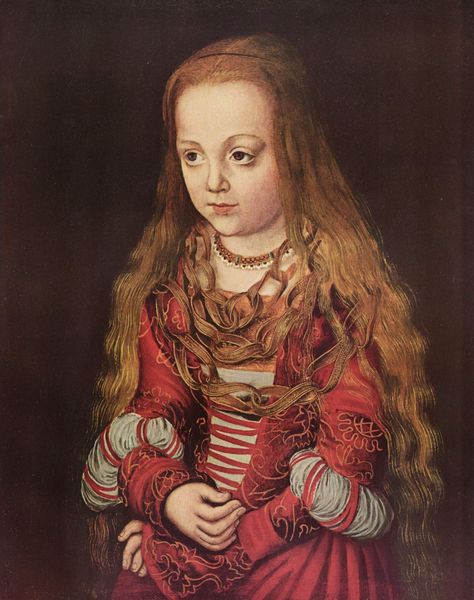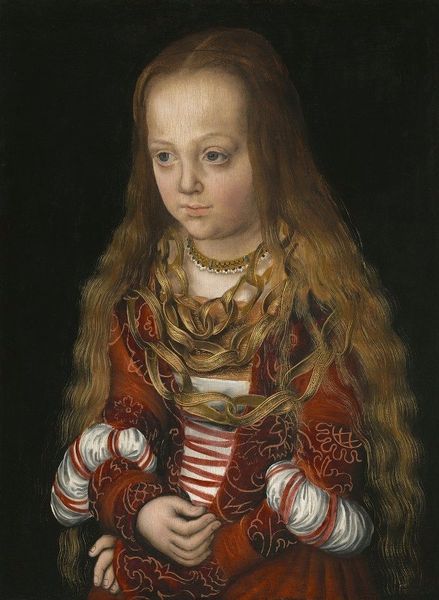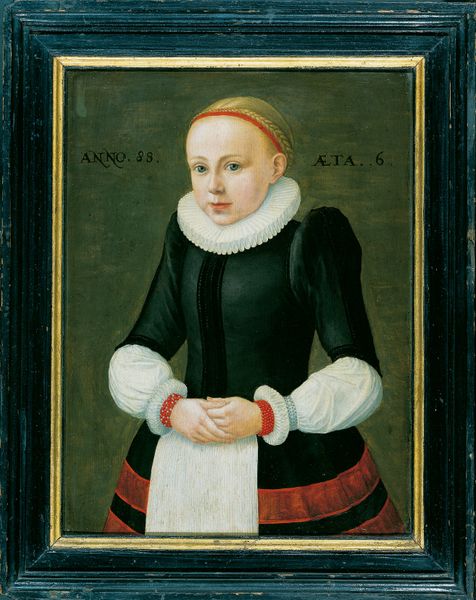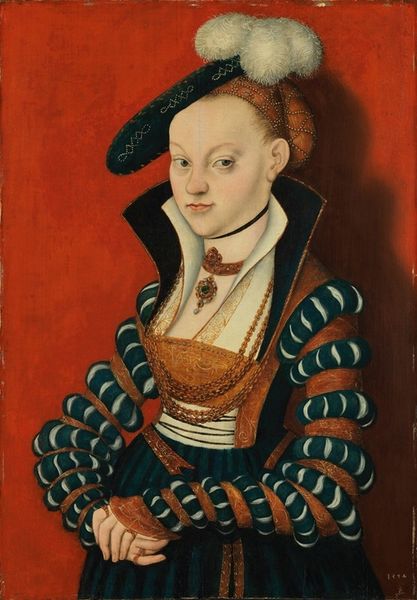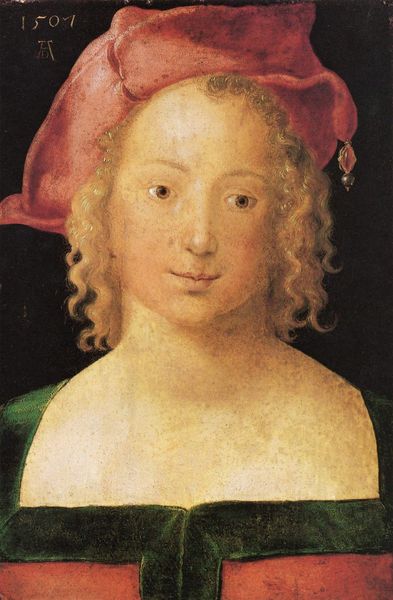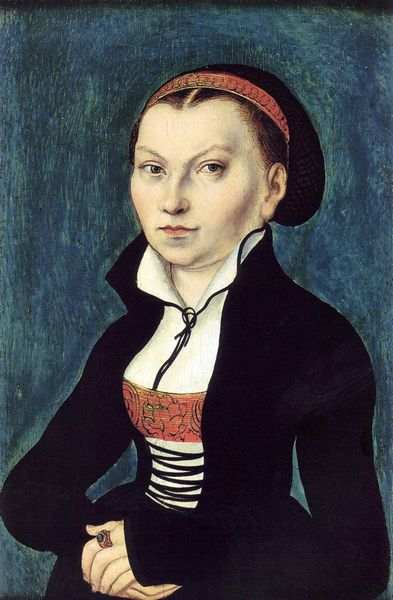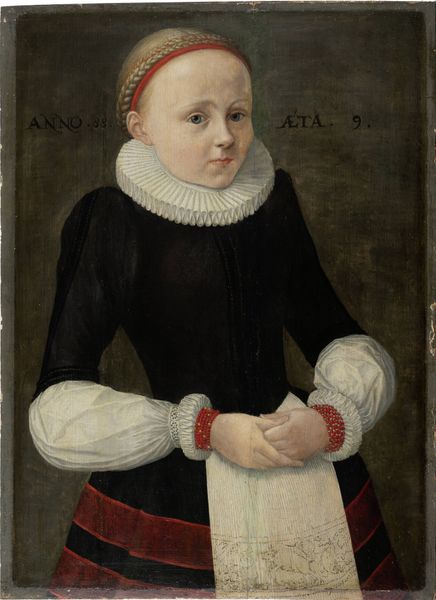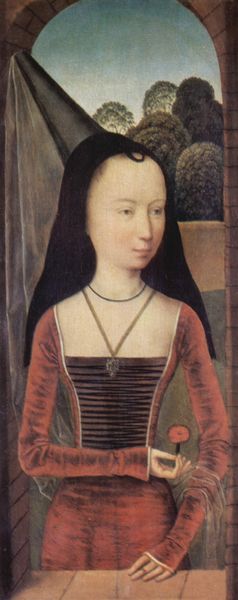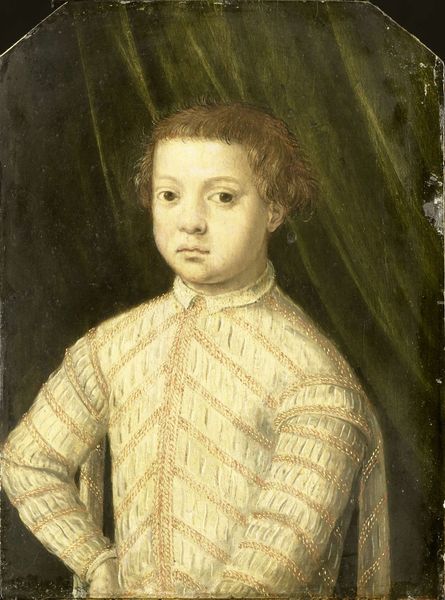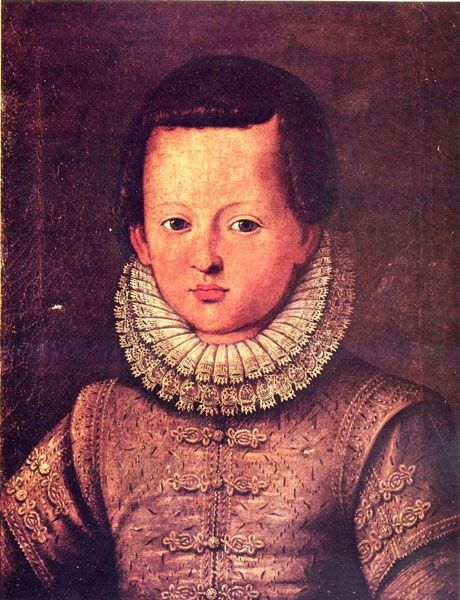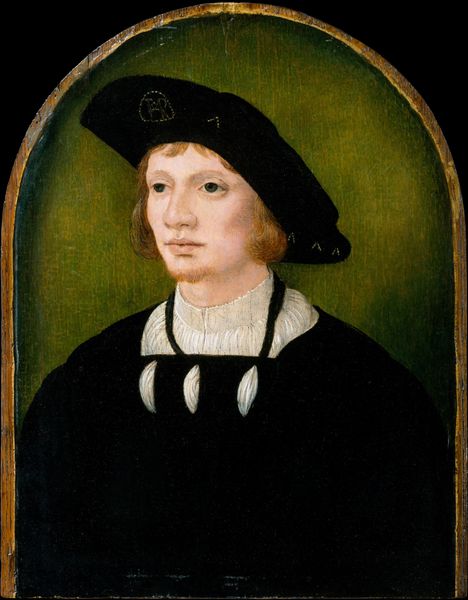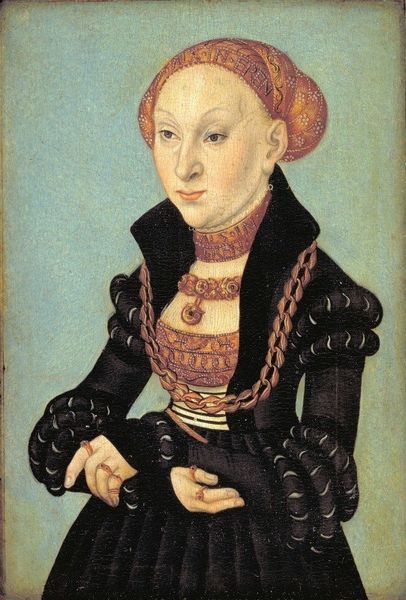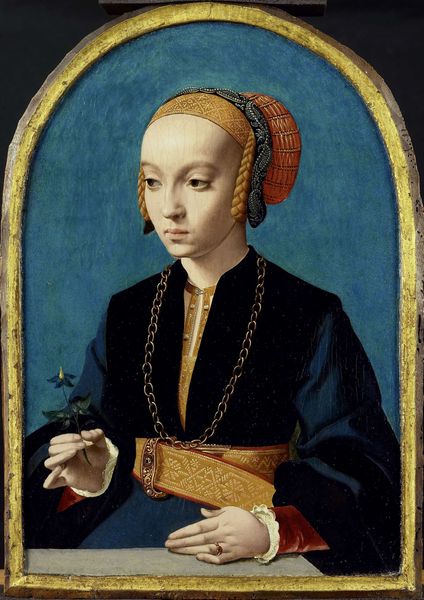
panel, painting, oil-paint
#
portrait
#
panel
#
painting
#
oil-paint
#
history-painting
#
northern-renaissance
#
realism
Dimensions: 41.1 x 26 cm
Copyright: Public domain
Curator: The somber palette really strikes me in this portrait, almost monochromatic, but her fair hair provides a break from it. Editor: We’re looking at “Portrait of a Young Girl, Magdalena Luther” by Lucas Cranach the Elder, dating from around 1520. It's oil paint on a wood panel. You notice the sobriety, which fits with the context; Cranach was court painter in Wittenberg and closely associated with the Reformation. Curator: Knowing it's oil on panel explains that incredible detail, particularly the almost forensic rendering of her skin texture and those individual strands of golden hair that cascade across her dark gown. One can almost feel the panel's grain beneath the paint layers. I’m curious, what would a sitter be paid during this time for portraits like these? Editor: I imagine it would have varied greatly depending on the artist's reputation and the size of the work, but consider what a rare privilege and mark of status it was. Think of it: this is likely Magdalena Luther, daughter of Martin Luther, at a time when her father's actions were reshaping Europe, directly challenging papal authority and shifting gender roles at this time, but how does her individual presence and portrayal intersect or challenge these larger socio-political issues? Curator: Ah, the symbolism! As you point out, the austere black garments would not just have been the fashion, they were probably making a statement! The simplification of form to pure linear construction and rendering. What were his workshop practices? Did Cranach actually execute the complete process on every work or did studio assistants do it for him, at that scale? Editor: That’s a fascinating question. With an output this large, collaboration within the workshop would be vital for the production rate to keep up with commissions. Curator: In truth, the materiality offers clues, you see minor but subtle color variations—it might be evidence of layers, potentially different pigment lots… Did the gender and social status of assistants also influence material choice? Were the pigments or support available or accessible for a particular painter because of who he was associated with? I really must re-examine the literature on workshop practices of the period! Editor: Precisely, exploring the layers of materiality, artistic processes, and socioeconomic factors deepens our understanding but should also challenge us to go further. Curator: An intersection of art, social statement and labor all coalescing in a single image… Fascinating! Editor: Exactly, there’s much to consider when looking at this painting, but that’s all we have time for right now!
Comments
No comments
Be the first to comment and join the conversation on the ultimate creative platform.
